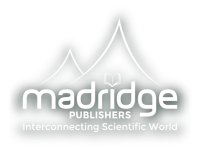Author Guidelines
In accordance to the following format, the authors are requested to submit their manuscripts which would help the editorial board members in reviewing the article in an easy way.
- Title
- Author(s) with affiliations
- Abstract
- List of abbreviations used or keywords
- Introduction
- Main body / Methods
- Results & Discussions
- Conclusions
- Acknowledgments
- Conflicts of interest statement (https://www.icmje.org/conflicts-of-interest/)
- Patient consent statement (if any)
- References
- Tables and figures
- Supplementary information
Title: The title should be definite, concise and should be in upper case letters.
Author(s) with Affiliation: The authors should provide their details like department, university or organization, city and country of corresponding authors along with their E-Mail address.
Abstract: The abstract should be clear which should prior emphasize on the manuscript and should not exceed 300 words. It should give brief outline & significance of the manuscript work.
Abbreviations used or Keywords: Present the list of abbreviations and keywords.
Introduction: The introduction should set the tone of the research work by providing a clear description of the work with a planned way or resolution. This ought to be general enough to draw in a reader's attention from a vast array of scientific fields.
Main body: The main body should include the comprehensive descriptions of all types of materials & methods used and the main proposed ideas, results and discussions.
Conclusions: A valuable conclusion should be given for the closure of a research/review paper.
Acknowledgments: This section includes sources of funding, grants, details about anyone who contributed substantially towards the research study etc.,
References: Madridge follows AMA (American Medical Association) styling for citations. Items are listed numerically in the order they are cited in the text. Use commas to separate multiple citation numbers in text. Superscript numbers (1) to mark citations in the text are placed outside periods and commas, and inside colons and semicolons. When citing the same source more than once, give the number of the original reference, where the information was found.
Order of details of a reference should be maintained as below:
Journal Article
Sizer PS Jr. Evidence-based manual therapy for chronic musculoskeletal pain: the challenges. Pain Pract. 2010; 10(5): 379-381. doi: 10.1111/j.1533-2500.2010.00416.x.
Note: For more than six, provide the names of the first three authors and then add et al.
Newspaper Articles
In print: Tarkan L. E.R. Patients often left confused after visits. New York Times. September 16, 2008: F1.
Online: Kelly, C. Physical therapy and the camaraderie of healing. New York Times. February 17, 2009: D5. https://www.nytimes.com/2009/02/17/health/17case.html. Accessed June 15, 2011.
Entire Books:
In print: Modlin J, Jenkins P. Decision Analysis in Planning for a Polio Outbreak in the United States. San Francisco, CA: Pediatric Academic Societies; 2004.
Book Chapter:
In print: Solensky R. Drug allergy: desensitization and treatment of reactions to antibiotics and aspirin. In: Lockey P, ed. Allergens and Allergen Immunotherapy. 3rd ed. New York, NY: Marcel Dekker; 2004:585-606.
Website: Rubenstein L. Falls and balance problems. The AGS Foundation for Health in Aging Website.
https://www.healthinaging.org/public_education/pef/falls_and_balance_problems.php. Accessed May 24, 2011.
Tables:
These should be used at a minimum and designed as simple as possible. We strongly recommend author to submit tables as .doc format. Tables are to be typed double-spaced throughout, including headings and footnotes. Each table should be on a separate page, numbered consecutively in Arabic numerals and supplied with a heading and a legend. Tables should be self-explanatory without reference to the text. Preferably, the details of the methods used in the experiments should be described in the legend instead of in the text. The same data should not be presented in both table and graphical form or repeated in the text. Cells can be copied from an Excel spreadsheet and pasted into a word document, but Excel files should not be embedded as objects.
Note: If the submission is in PDF format, the author is requested to retain the same in .doc format in order to aid in completion of process successfully.
Figures:
The preferred file formats for photographic images are PNG, TIFF and JPEG. If you have created images with separate components on different layers, please send us the Photoshop files.
All images MUST be at or above intended display size, with the following image resolutions: Line Art 800 dpi, Combination (Line Art + Halftone) 600 dpi, Halftone 300 dpi. See the Image quality specifications chart for details. Image files also must be cropped as close to the actual image as possible.
Use Arabic numerals to designate figures and upper case letters for their parts (Figure 1). Begin each legend with a title and include sufficient description so that the figure is understandable without reading the text of the manuscript. Information given in legends should not be repeated in the text.
Figure legends should be typed in numerical order on a separate sheet.
Legends for Tables & Figures:
Table 1: Legend of the Table 1
Figure 1: Legend of the Figure 1
Tables and Equations as Graphics:
If equations cannot be encoded in MathML, submit them in TIFF or EPS format as discrete files (i.e., a file containing only the data for one equation). Only when tables cannot be encoded as XML/SGML can they be submitted as graphics. If this method is used, it is critical that the font size in all equations and tables is consistent and legible throughout all submissions.
Supplementary information:
Discrete items of the Supplementary information (for example, figures, and tables) referred to at an appropriate point in the main text of the paper.
Summary diagram/figure included as part of the Supplementary information (optional).
All Supplementary information is supplied as a single PDF file, if possible. File size within the permitted limits for Supplementary Information. Images should be a maximum size of 640 x 480 pixels (9 x 6.8 inches at 72 pixels per inch).



